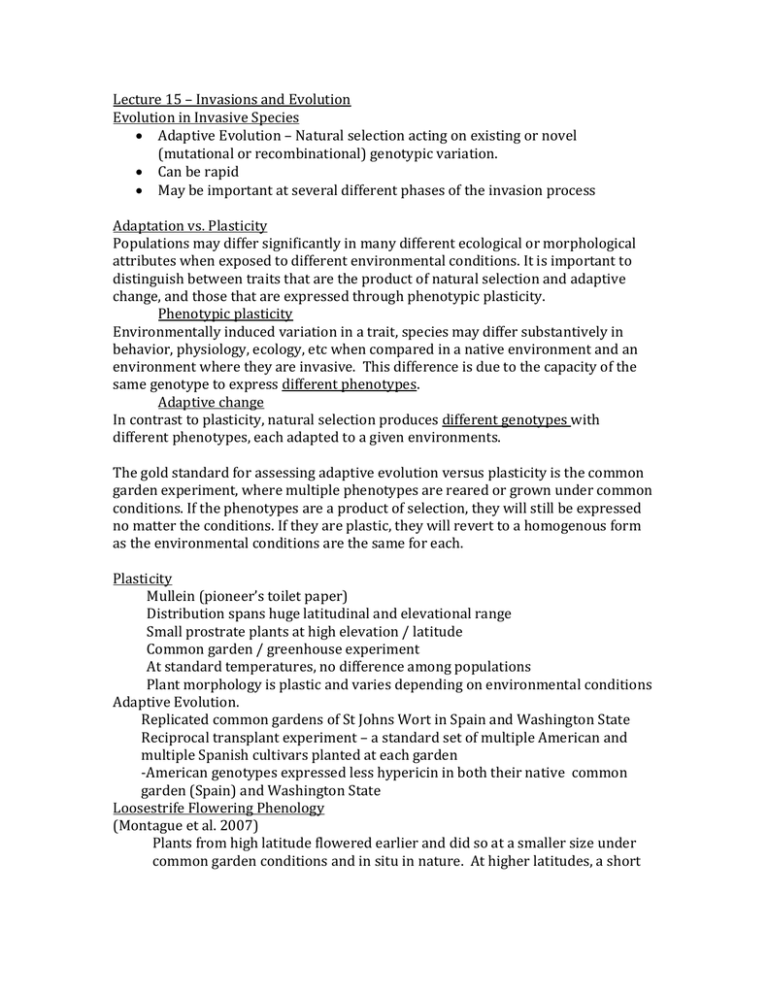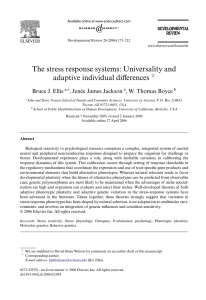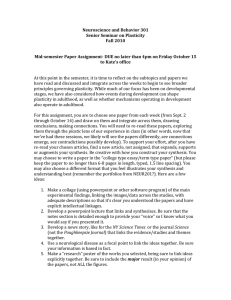Lecture 15 – Invasions and Evolution Evolution in Invasive Species
advertisement

Lecture 15 – Invasions and Evolution Evolution in Invasive Species Adaptive Evolution – Natural selection acting on existing or novel (mutational or recombinational) genotypic variation. Can be rapid May be important at several different phases of the invasion process Adaptation vs. Plasticity Populations may differ significantly in many different ecological or morphological attributes when exposed to different environmental conditions. It is important to distinguish between traits that are the product of natural selection and adaptive change, and those that are expressed through phenotypic plasticity. Phenotypic plasticity Environmentally induced variation in a trait, species may differ substantively in behavior, physiology, ecology, etc when compared in a native environment and an environment where they are invasive. This difference is due to the capacity of the same genotype to express different phenotypes. Adaptive change In contrast to plasticity, natural selection produces different genotypes with different phenotypes, each adapted to a given environments. The gold standard for assessing adaptive evolution versus plasticity is the common garden experiment, where multiple phenotypes are reared or grown under common conditions. If the phenotypes are a product of selection, they will still be expressed no matter the conditions. If they are plastic, they will revert to a homogenous form as the environmental conditions are the same for each. Plasticity Mullein (pioneer’s toilet paper) Distribution spans huge latitudinal and elevational range Small prostrate plants at high elevation / latitude Common garden / greenhouse experiment At standard temperatures, no difference among populations Plant morphology is plastic and varies depending on environmental conditions Adaptive Evolution. Replicated common gardens of St Johns Wort in Spain and Washington State Reciprocal transplant experiment – a standard set of multiple American and multiple Spanish cultivars planted at each garden -American genotypes expressed less hypericin in both their native common garden (Spain) and Washington State Loosestrife Flowering Phenology (Montague et al. 2007) Plants from high latitude flowered earlier and did so at a smaller size under common garden conditions and in situ in nature. At higher latitudes, a short and cool growing season selects for plants to flower early and at a smaller size so that the seeds will develop before frost comes. Evolutionary Response of natives to Invaders - Soapberry Bug (Carroll et al. 2005) Use their beak to access and feed on seeds within a fruit. In Australia fed on the native woolly rambutan Balloon vine, a tropical American species invaded Australia in early 1960’s. Soapberry bugs adopted it as a host, but only bugs with longer beaks could access the seeds. As balloon vines became abundant, selection favored longer beaked bugs driving the evolution of this trait. - Red-bellied Snakes Cane toad bufotoxin is lethal to predatory snakes imposing strong selection on snakes to avoid cane toads as prey. • In experiments, snakes from areas with established cane toad populations exhibited significant aversion, snakes from outside of the cane toad range did not.








